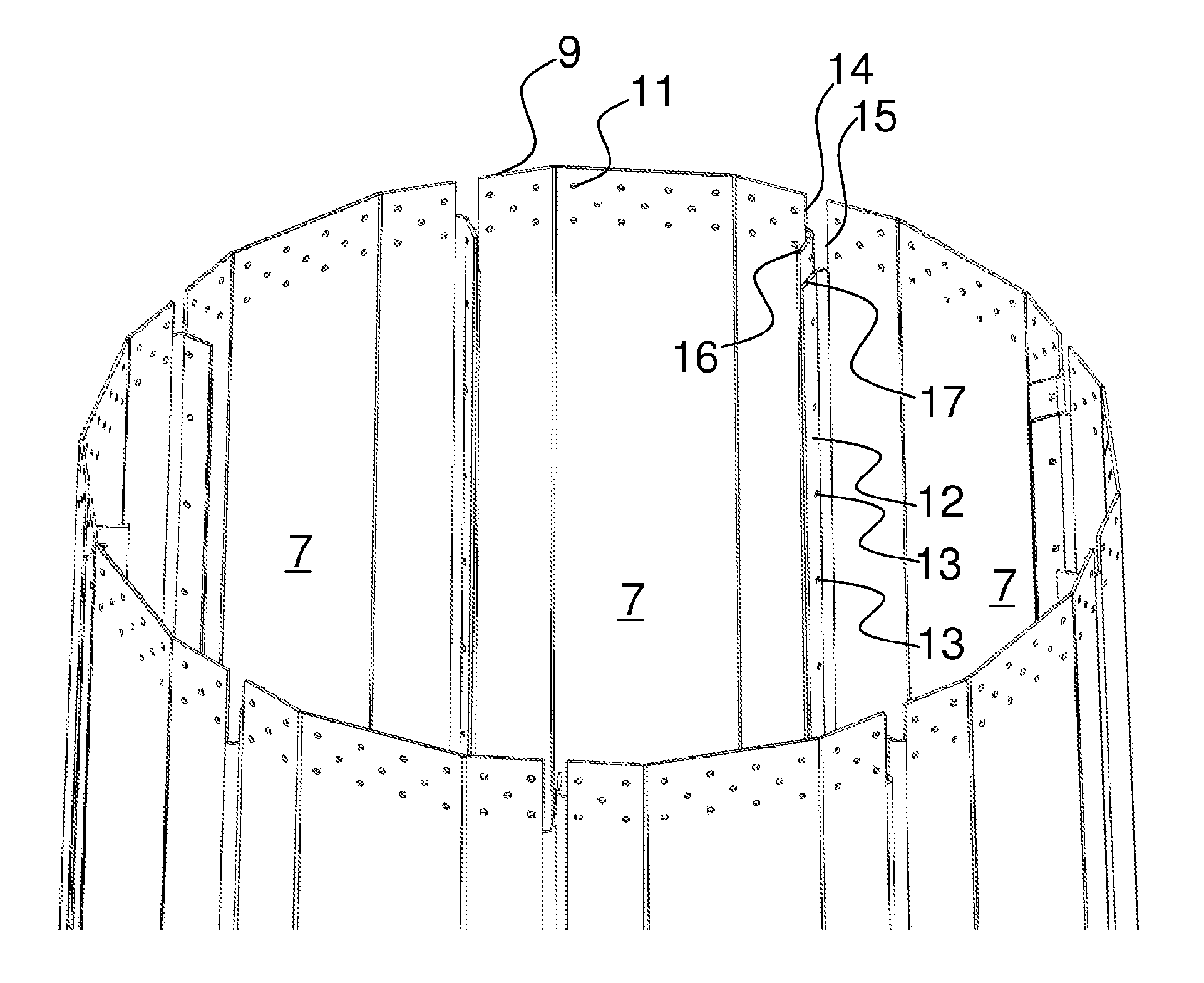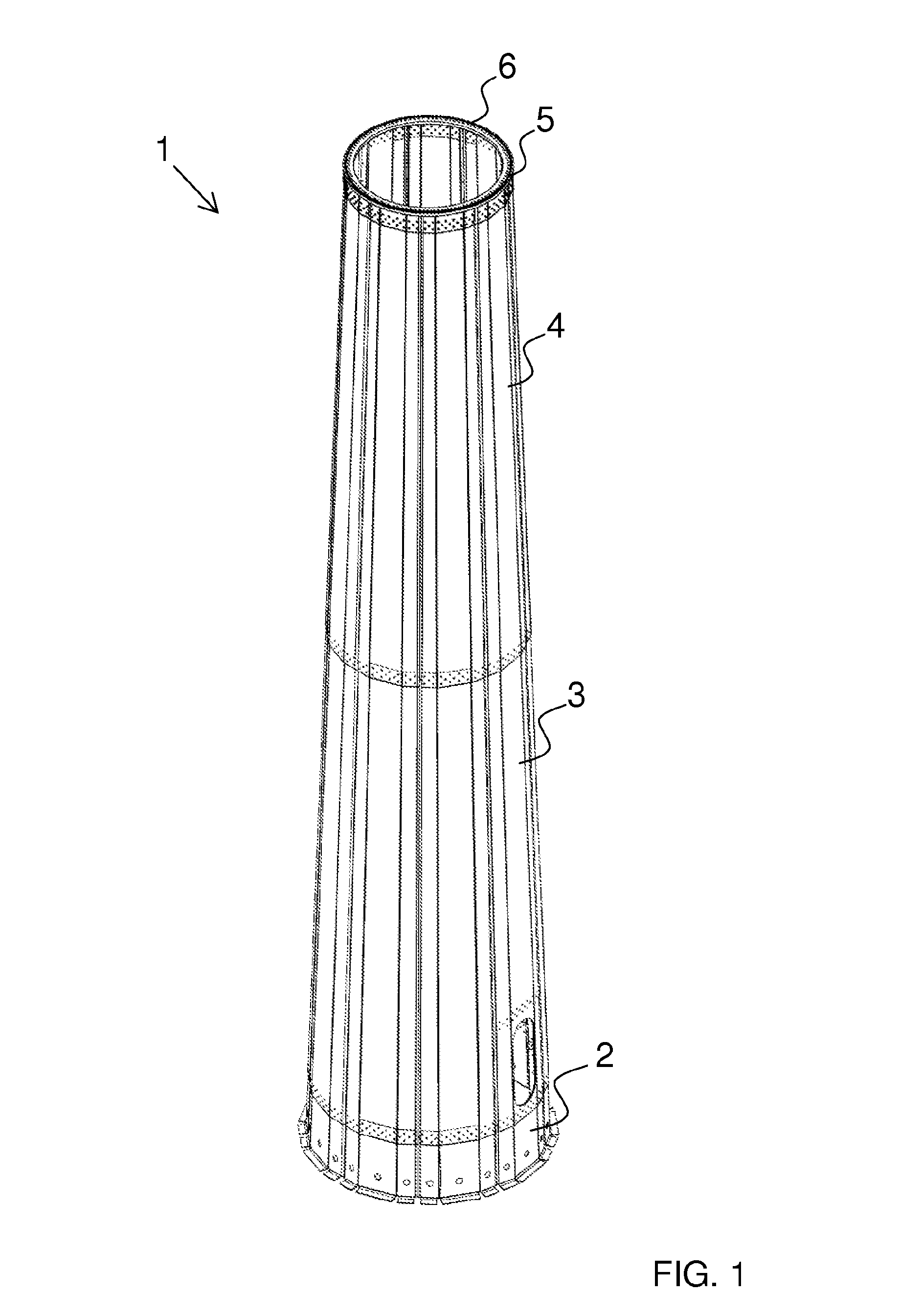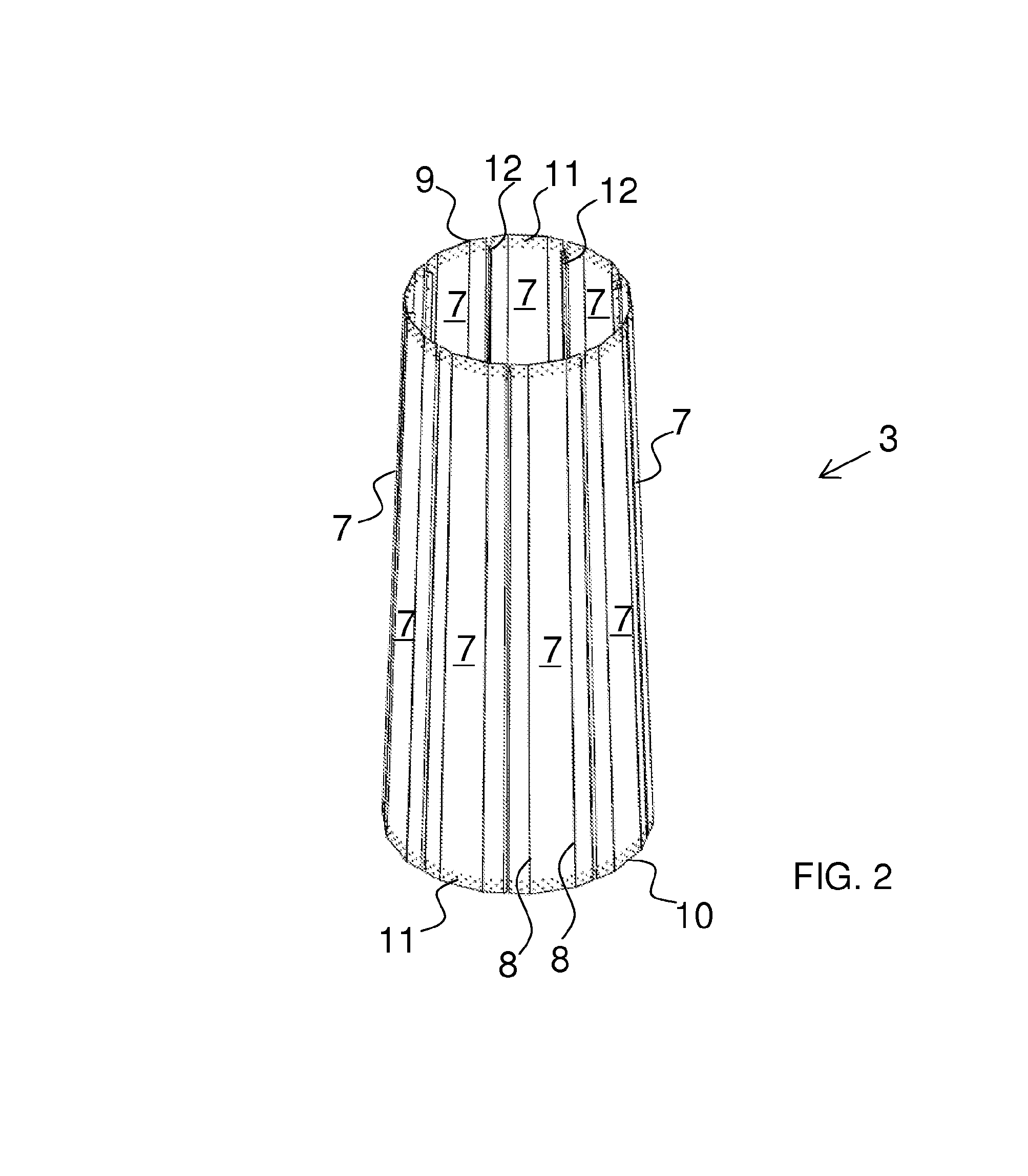Tower element
a technology of towers and elements, applied in the direction of rod connections, sustainable manufacturing/processing, final product manufacturing, etc., can solve the problems of increasing the size of towers, unable to transport via road networks, and increasing the cost of transportation solutions, so as to reduce the cost of material processing, and facilitate the effect of handling
- Summary
- Abstract
- Description
- Claims
- Application Information
AI Technical Summary
Benefits of technology
Problems solved by technology
Method used
Image
Examples
Embodiment Construction
[0028]In FIG. 1 appears a complete tower 1 which e.g. is suited for use in connection with a modern wind power plant. In the shown variant, the tower 1 is constructed with a foundation element 2 which is fixed to a concrete foundation in the earth. The foundation element 2 is made up of segments and will be described in more detail under the description of FIG. 4.
[0029]Upon the foundation element 2 there is mounted a tower element 3 and a further tower element 4. Both of these tower elements are made according to the same principle, and the only difference is in principle that they do not have the same diameter as the bottom diameter on the tower element 4 corresponds to the top diameter on the tower element 3 such that these fit together. At the top of the tower element 4 is mounted a top element 5 with a flange 6 for mounting e.g. a yawing ring or other objects.
[0030]In FIG. 2 is seen a tower element 3 consisting of nine identical segments 7. As it appears from the Figure, the ind...
PUM
 Login to View More
Login to View More Abstract
Description
Claims
Application Information
 Login to View More
Login to View More - R&D
- Intellectual Property
- Life Sciences
- Materials
- Tech Scout
- Unparalleled Data Quality
- Higher Quality Content
- 60% Fewer Hallucinations
Browse by: Latest US Patents, China's latest patents, Technical Efficacy Thesaurus, Application Domain, Technology Topic, Popular Technical Reports.
© 2025 PatSnap. All rights reserved.Legal|Privacy policy|Modern Slavery Act Transparency Statement|Sitemap|About US| Contact US: help@patsnap.com



